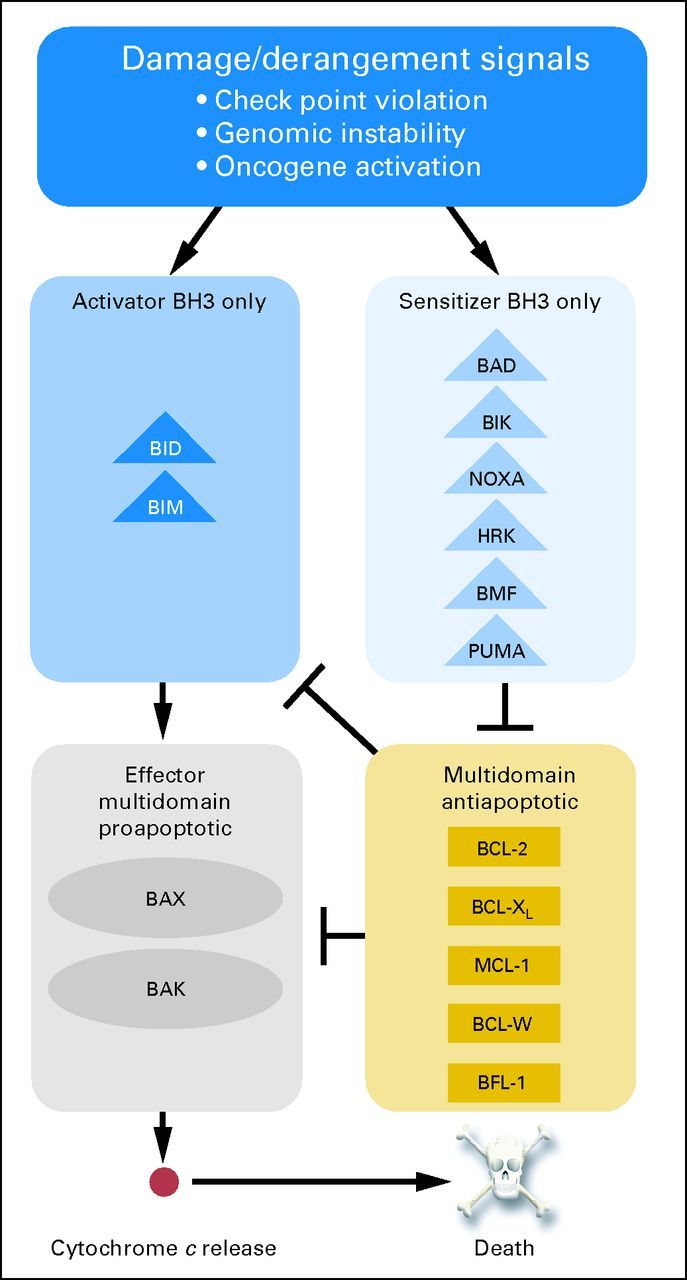Fig 1.

Three families of B-cell lymphoma/leukemia 2 (BCL-2) proteins govern the decision to undergo mitochondrial apoptosis. DNA damage, checkpoint violations, or oncogene activation generates pro-death BCL-2 homology 3 (BH3) –only proteins, which can be subdivided into activator and sensitizer subfamilies based on function. Activator BH3-only proteins such as BID and BIM activate effector multidomain proapoptotic proteins such as BAX and BAK, leading to mitochondrial permeabilization and commitment to apoptotic death. Multidomain antiapoptotic proteins such as BCL-2 oppose this process by sequestering activators and thereby limiting contact with effectors or by sequestering activated effectors. Sensitizer BH3-only proteins such as BAD act as selective inhibitors of antiapoptotic proteins. BCL-w, BCL-2–like protein 2; BCL-XL, BCL extra long; BFL-1, BCL-2–related gene expression in fetal liver; MCL-1, MCL-1, myeloid cell leukemia 1. Data adapted.14
